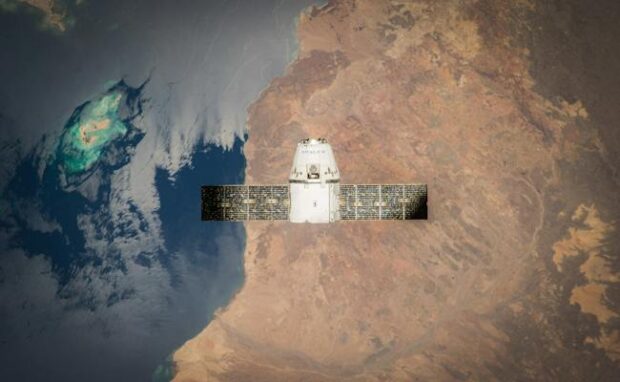Japan tests space junk laser
Japanese startup EX-Fusion will test a ground-based fusion laser to “capture, remove,” or push out” debris in the Earth’s orbit. It will concentrate nuclear fusion energy into a concentrated beam of heat and light to slow down space junk. Eventually, those objects will slow down enough to plunge into our atmosphere and disintegrate safely.
The latest space news doesn’t typically discuss the Earth’s space garbage problem. Yet, previous voyages into the great void have discarded so many rocket boosters, satellites, and other objects that they may obstruct further exploration. Fortunately, Japan may clear our atmosphere again and enable everyone to explore outer space.
This article will discuss how the Japanese company will use its space junk laser. Later, I will share other space refuse disposal methods.
How will the space junk laser work?
Osaka-based startup EX-Fusion is attempting to accomplish what once seemed impossible — taking out minuscule pieces of space junk with laser beams fired from the ground.https://t.co/nZex0gNfIm
— Nikkei Asia (@NikkeiAsia) January 14, 2024
EX-Fusion will install its high-powered fusion laser at Canberra, Australia’s EOS Space Systems facility. The Debrief says its project will have two phases.
First, it will look for debris smaller than 10 cm. Second, it will fire a ground-based laser to decelerate and eliminate debris so that our atmosphere can burn them into dust.
EX-Fusion uses diode-pumped solid-state (DPSS) lasers to apply pulsed energy to interstellar debris. Researchers initially developed this technology to build and power the world’s first laser fusion nuclear reactor.
Laser fusion involves irradiating a powerful laser beam onto a hydrogen fuel pellet to generate a high-pressure implosion that triggers a nuclear fusion reaction.
“The power of a laser for destroying space junk is an order of magnitude lower than for nuclear fusion, but they share technical challenges, such as controlling them via special mirrors,” EX-Fusion CEO Kazuki Matsuo said.
However, the company faces significant challenges in using its space junk laser. After all, targeting rapid orbital debris from the Earth’s surface requires accurate tracking and aiming.
Ironically, the atmosphere may also deflect and weaken laser beams, reducing effectiveness. Moreover, fine-tuning its power is a delicate and dangerous task.
You may also like: The world’s biggest nuclear fusion reactor activates
The laser will not reach its target if it’s too weak. On the other hand, excessive power may destroy surrounding satellites and other space assets.
Most don’t know that space junk is a growing problem that has caught the attention of several international organizations, such as the European Space Agency and the US military.
“In recent years, the number of space debris around the Earth has increased significantly, leading to catastrophic collisions with valuable space assets essential to life on Earth, such as telecommunications, finance, location, and navigation,” EX-Fusion said in a press release.
What are the other space junk disposal methods?

Last year, Tokyo-based company Astroscale Japan introduced another way of removing space garbage. It will launch the ADRAS-J satellite to monitor these objects while it develops a mechanical arm to move them toward the Earth’s atmosphere.
Then, it will send its ELSA-d satellites to deploy the grabber for clearing operations. The first is a 175 kg servicer satellite, and the latter is a client satellite weighing 17 kg. Here’s how it works:
- The servicer has “proximity rendezvous technologies and a magnetic docking mechanism” to remove defunct satellites and other large pieces of debris.
- Meanwhile, the client satellite has a ferromagnetic plate that docks onto a space object.
- Then, the servicer descends into the Earth with the client and its space garbage until they disintegrate in the atmosphere.
However, we must be careful when dropping objects onto the Earth. Otherwise, it may collide with operational satellites or be too large to disintegrate in our atmosphere completely.
Collision with other orbiting objects could set an unpredictable chain reaction that could damage other installations. Alternatively, it may trigger the Kessler Syndrome.
You may also like: Space debris model could help remove space junk
It is when space objects form into a larger aggregate, making it harder to eliminate. That is why the ASDRAS-J satellite’s mission is so important.
It gathers as much information as possible so that another satellite can start clearing operations immediately. Soon, Astroscale Japan might pioneer a new space junk clearing industry.
Nowadays, more countries send satellites to space for research, global positioning, and other services. They would need companies like Astroscale to ensure their satellites have a clear launch and orbital path.
Conclusion
Japanese startup EX-Fusion will use a space junk laser to eliminate orbital debris. It will concentrate fusion energy into a beam that will slow down objects so our atmosphere may disintegrate them.
The country is also developing more sustainable ways of launching space missions. For example, Kyoto University’s Koji Murata will launch wooden satellites into space.
It may ensure satellites can easily burn in our atmosphere so they won’t leave more space junk. Learn more about the latest digital trends at Inquirer Tech.